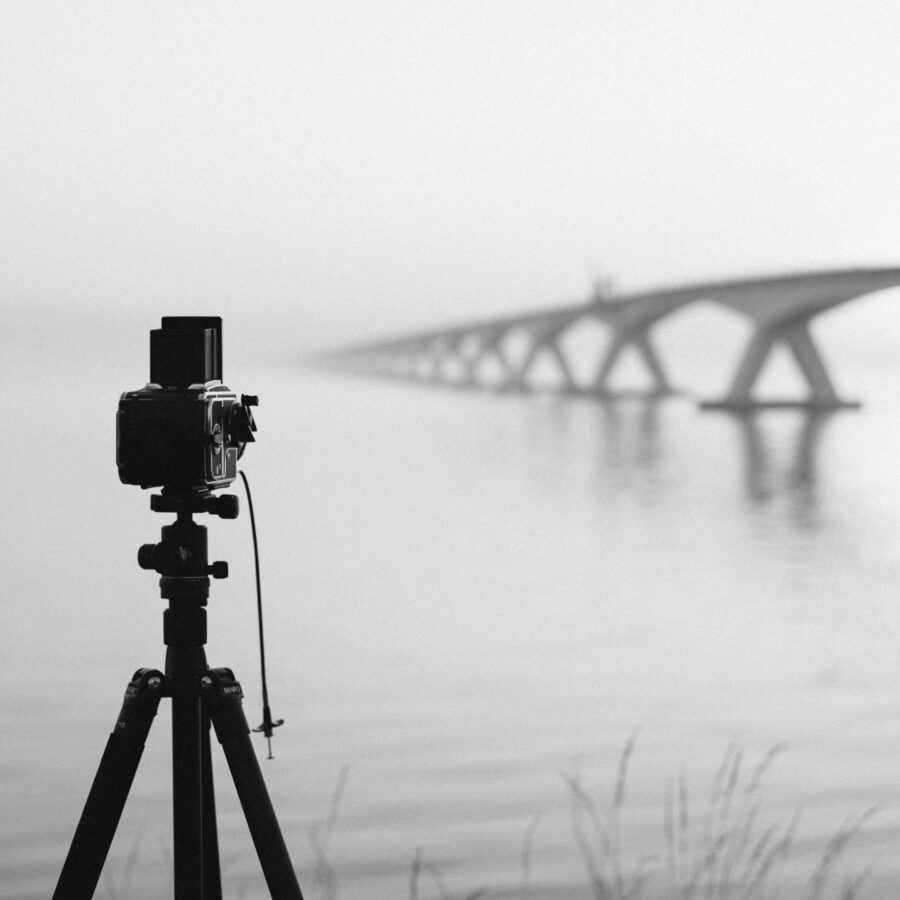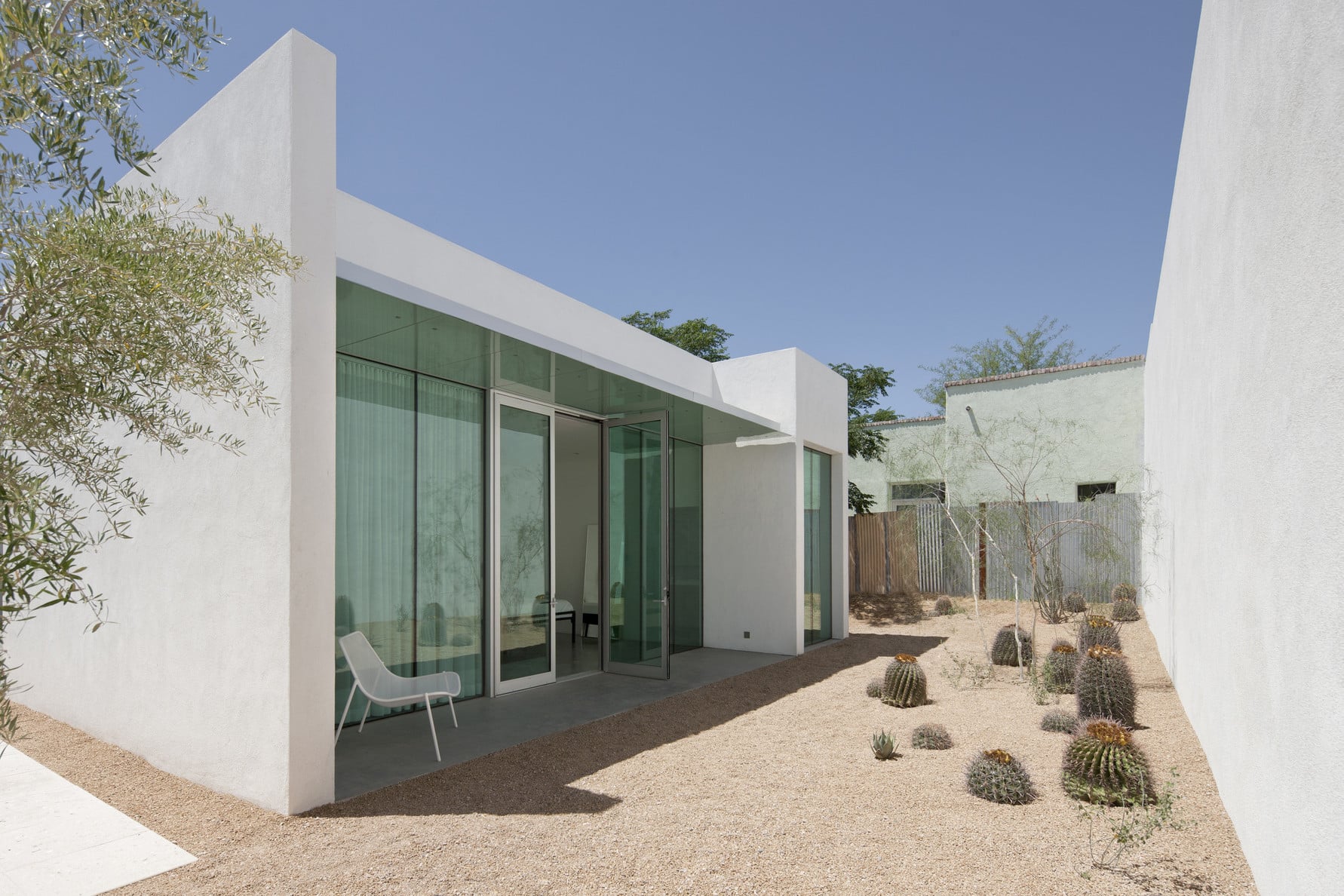If you are serious about photography, then you may want to invest in a tripod. It is one of the most important tools for any photographer looking to take good photos, whether you are a professional or just doing photography as a hobby. A tripod helps provide stability to your shots and it improves the quality of your photographs, as it takes out the handshake that will naturally happen when you are taking photos. Tripods are also helpful for sport and event photographers as they help take the weight of a heavy camera off your hands. Your tripod will help you take better photos by allowing you to adjust the light intake on the camera, the shutter speed, ISO, etc. Not only will it give you more creative freedom in your photography, but it will increase your technical possibilities.
Yet here is the thing about tripods – there are so many different options on the market! It can be overwhelming to figure out the kind of tripod you need, so at Format, we’ve put together a comprehensive guide for buying the perfect tripod for you. We’ll go over the types of tripods available, the different materials available, and the price range.
Type of Tripods
When you are trying to decide which tripod to buy, it’s important to think about why and how you are going to be using it. A tripod is a necessary investment, and as you grow your photography business, you’ll surely end up with several different tripods, but deciding which one to start with can be daunting. We’ve broken down five different tripods with pros and cons for each type to help narrow down your decision.
Tabletop Tripods
For this type of tripod, you’ll be able to keep your camera standing on a table – this tripod option is a compact or mini option. It can hold a good amount of weight but isn’t a full-sized tripod. They are easy to use for smartphones or small cameras.
Pros:
- Easy to transport and carry around
- Lightweight
- Very versatile
Cons:
- Usually build for smaller cameras/systems
- Cannot use in all circumstances (for instance, you’ll need a table or use it just for low shoots)
Travel Tripods
Travel tripods are a great option to lessen the weight of what you would get with other types of tripods, making it easy to pack in backs and cart around to different countries and locations. Despite not having all the features of regular tripods, they really can improve the quality of your photos.
Pros:
- Very lightweight, easy to transport
- Many affordable options
- Easy to deconstruct
Cons:
- Limited in features
- Increased cost as you increase durability (plastic is less expensive, carbon fiber is more durable but more expensive)
Studio Tripods
Here is the thing, if you do any type of studio photography (portrait photography, still photography, fashion photography, etc.), you are going to need to invest in a studio tripod. These are larger and heavier tripods but are also the best tripods.
Pros:
- Produce the best quality photography
- Very sturdy and durable
- Great features
Cons:
- Often expensive
- Heavy and hard to transport
Monopods
When you hear monopod – think one-leg tripod, as that is exactly what it is. This type of tripod is good for things like wildlife photography or landscape photography as the one leg does act to help keep your hand sturdy and eliminate camera shake, but also lets you move it around easily.
Pros:
- Lightweight
- Easy to transport, as well as take down and set up
- Eliminates camera shake, crispens photographs
Cons:
- Cannot stand on its own
- Can only be used in certain instances
Gorilla Pods
A gorilla pod is one of those tripods with legs that look like little balls all connected to one another – they are small tripods that are able to bend and wrap their legs around different objects. Their rubberized joints make them very versatile, and they can be used not only to hold cameras but to hold lights too.
Pros:
- Variety of affordable options
- Very versatile
- Solid option in terms of portability
Cons:
- Relatively small
- Need something to be affixed to
Tripod Materials
Understanding the type of material that you want your tripod to be made of can seriously help you narrow down which tripod to go with. The material that you choose will affect a few different things, including its durability, weight, and cost. There is not necessarily one material that trumps the other, you need to match up the material with your needs as a photographer. When we talk about the material being used, we are talking about the material for the tripod, it is for the legs specifically—the two most common are aluminum and carbon fiber, but you also can be basalt and wood.
Aluminum
Using aluminum as the material for a tripod is a very common option – these ones are heavier so you will always get a tripod that is very sturdy. They are a little harder to transport, but they are great to use as a studio tripod.
Pros:
- Very sturdy, incredibly stable
- More affordable
- Good longevity
Cons:
- Heavier and harder to transport
- Will corrode if not wiped down when used outdoors
Carbon Fiber
Like its counterpart, aluminum, carbon fiber is another one of the most popular materials used for tripods. This material is stiffer, meaning it transmits fewer vibrations into the camera. The material is super lightweight and easy to lug around – great for any type of photography that requires you to move from shoot to shoot.
Pros:
- Lightweight, easy to transport
- Very durable
- Strong material
Cons:
- More expensive
- More top heavy, less stable
Basalt
Choosing basalt as your tripod material is the perfect in-between when it comes to aluminum and carbon fiber. With basalt material, you will find a tripod that is stiffer than aluminum, but less expensive than carbon fiber.
Pros:
- Absorbs vibrations, makes for solid photography
- Lightweight and easy to transport
- Good torsional rigidity
Cons:
- Can be more expensive
- Slightly less stable than aluminum
Wood
A wood tripod is where it all started. Tripods have been made from wood for years and years, so it’s a solid option for any photographer. They are used less as technology has evolved but are still good workable options.
Pros:
- Easy to service
- Very durable, has longevity
- Can be aesthetically very beautiful
Cons:
- Heavy and hard to transport between shoots
- Harder to find
Tripod Head Types
Here’s the thing when you go to purchase a tripod—the heads and legs are often sold separately. You will sometimes have instances where you purchase a kit and both the legs and the head come together, like the free tripods you get with your camera, but often you’ll be purchasing a tripod head on its own. Just like with your tripod legs, you need to figure out what you are going to be using your tripod for and then choose the appropriate head for it—the two most common types are ball heads and pan/tilt heads, but we’ll also break down a third option, gimbal heads.
Ball Heads
A ball head is one where the mount sits on a ball socket and you are able to rotate the camera at any angle. This is the most popular tripod head you can get, widely used by professional and hobbyist photographers. This type of tripod head is great because you’re able to adjust for uneven terrain, making for a very versatile tripod. At the same time, since it can move so easily, you will also find yourself needing to adjust it back to where you need it after each shot. It’s perfect for photography that requires a lot of movement—things like events, sport photography, etc.
Pros:
- Perfect for shoots that require a lot of movement
- Ease of control
- Very intuitive and stable
Cons:
- Takes time to ensure the camera is level
- Less expensive models have a harder time holding heavier cameras
Pan/Tilt Heads
The second of the two most common camera heads: the pan/tilt head. This one lives up to its name by only being able to move either side to side or up and down—it’s known for its three dimension ability. With pan/tilt heads, you’ll want to set up the camera angle, and then adjust the head to get your angles from there. This type of tripod head is great for panoramic shots, so when taking nature or landscape photography, you will thrive with this option. The pan/tilt tripod heads also work well for video and can sometimes be a bit slower for photography.
Pros:
- Brings lots of stability to shots
- Great balance
- More precise
Cons:
- Won’t be able to capture every angle
- Takes more time to set up the shot
Gimbal Heads
While we broke down two of the most common types of tripod heads with the ball head and pan/tilt head, don’t let your search for the best tripod head stop at these two—a gimbal head is an amazingly specialized option. One of the biggest benefits to this type of tripod head is that it can hold a lot of weight, so if you are working with a heavy camera then this should be one that you seriously consider. They are often used for nature photography, bird photography or astrophotographers—and very good choices for all three. You can rotate both horizontally and vertically, but your shots will stay vertical.
Pros:
- Can support heavy cameras
- Ability to follow subjects with ease
- Very high-quality build
Cons:
- Large in size, making them hard to transport
- Heavy to carry and set up
Height and Weight
Don’t sleep on how important choosing the height and weight of your tripod is—it’s a beginner’s mistake, one that can be quite costly when you don’t spend time figuring out the details of what you need in a tripod. Both the height and weight will determine how you are going to be able to use your tripod—here are some things to consider.
How to Choose the Right Height for Your Needs
The height that you need your tripod at will differ depending on how tall you are—a good rule of thumb is that you will want it to be able to go up to your shoulders so when you have your camera on it you can take pictures at eye level. It’s important that your tripod can be stable and at the height you need it. If traveling with your suitcase is important, you’ll also need to make sure that at its smallest height (either folded or retracted), you are able to fit it in the travel bag or suitcase that you use. Measure the height and add on what your camera would bring it to and make sure it works for you.
How to Balance Weight and Stability
The weight is another important factor to consider for two reasons—you need the weight to be one that you can carry or move when you need it. How far or often you transport your tripod will factor into a weight you are comfortable with. For weight, you also need to consider the weight the tripod can hold—is your camera light or heavy? How light of a tripod will you need to be able to hold it? For example, carbon fiber legs can hold less than aluminum legs. These are important things to consider as the lack of balance in terms of weight can affect the stability and quality of pictures.
Price Range
Like everything else in photography, you will be able to choose a tripod within a wide range of prices. You can get everything from budget options to ones that cost a pretty penny. This means that they can range in price from $20 all the way up to $2,000. It’s important to understand the differences between the tripods that fall within each price range, so you can compare your needs based on what you are comfortable spending. It’s a tough balance to make sure you don’t pass over quality for a cheap option, but you also don’t want to break the bank on a tripod. To help inform your decision, consider the options and the features you can expect from budget, mid-range, and high-end options.
Budget options
When talking about low-budget tripods, we are looking at tripods below $150—if you are just getting started in photography or holding yourself to a smaller budget to start, then rest assured you are going to be able to find a tripod within that price range. With budgeted options, you will be able to get a reliable tripod that will do the trick—lots of photographers do use budget options. While they’re harder to travel with, you can most definitely find great tripod options within this price range.
Pros:
- Reliable tripod options available
- Several budget options
Cons:
- Sometimes are harder to travel with
- Can’t always manage heavily weighted cameras
- Cannot use as an all-in-one tripod
Mid-range options
For a medium-budget tripod, you can expect to spend in the range of $200 to $400. When you move up to this price range, you can hold more weight in terms of camera size. They’re also great for shooting 4k video. You’re also going to be able to comfortably travel with it and take it outdoors—the features of this range allow for the tripod to be weather and dust resistant. Very often, photographers can live within this range and be very happy with the quality of tripod they have.
Pros:
- Water and dust-resistant features, easy to bring outside
- Great quality
- Improved portability
Cons:
- Limits to how heavy the camera can be
- Harder for longer-length filming/video shoots
High-end options
Top-of-the-budget tripods are considered anything that is over $500 – if you are working in videos or shooting short films, then you will most definitely need to make the investment into a higher-end tripod. If you shoot wedding videos professionally, you’d likely be a photographer who needs a high-end tripod. These high-end tripods can support very heavy cameras and they always make very high-quality videos and pictures.
Pros:
- Incredibly high-quality photos/videos
- Can hold any camera
- Incredibly well-built
Cons:
- Share many of the same features as budget to mid-range tripods
- Expensive
Determining Which Tripod You Need
A tripod is an important tool for any photographer. Generally, they are an investment that will need to be made but will most definitely pay off.
It’s important to choose a tripod type that fits the need of the type of photography that you do—both with the type of tripod, the material you choose, and the type of tripod head you go with. Whether you are shooting in studios, out in nature, at wedding and event locations, subjects who are moving or posing are all factors you need to consider.
There are so many options out there and you’ll definitely be able to find a tripod that meets your needs within your budget.
Now that you have all the info, it’s time to make your decision. Try writing down the answer to the following questions to narrow down your needs:
What do you need your tripod for? How will you use it most?
What is a price range you are comfortable with?
What is most important: durability, stability, or portability?
Once you can answer these questions, you’ll know exactly the tripod you need for where you are in your photography career.








